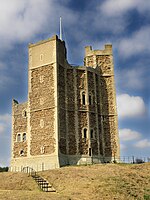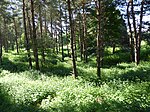Crag Farm Pit, Sudbourne
Geological Conservation Review sitesPliocene EnglandSites of Special Scientific Interest in Suffolk

Crag Farm Pit, Sudbourne is a 4.8-hectare (12-acre) geological Site of Special Scientific Interest east of Sudbourne in Suffolk. It is a Geological Conservation Review site, and within the Suffolk Coast and Heaths Area of Outstanding Natural Beauty.This site dates to the early Pliocene, around four million years ago. It is described by Natural England as an important geological site, which has the best exposure of sandwave facies of the Coralline Crag Formation. Fossils of many bryozoan species are present.The site has been filled in and is now a field. It is on private land with no public access.
Excerpt from the Wikipedia article Crag Farm Pit, Sudbourne (License: CC BY-SA 3.0, Authors, Images).Crag Farm Pit, Sudbourne
Crag Farm Road, East Suffolk
Geographical coordinates (GPS) Address Nearby Places Show on map
Geographical coordinates (GPS)
| Latitude | Longitude |
|---|---|
| N 52.116 ° | E 1.545 ° |
Address
Crag Farm Road
Crag Farm Road
IP12 2BN East Suffolk
England, United Kingdom
Open on Google Maps










